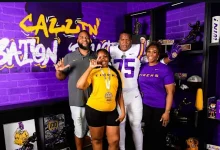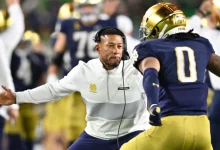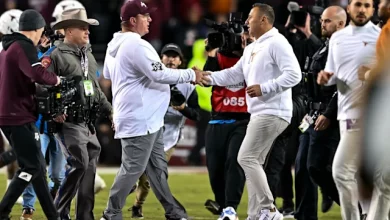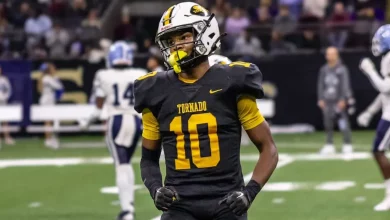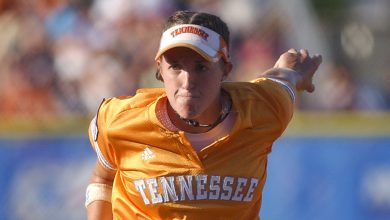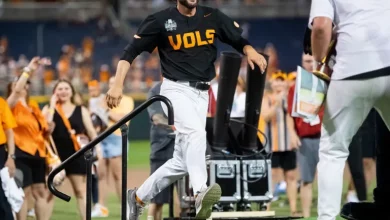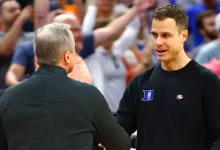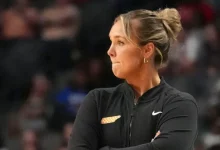What are the next steps for the Louisville Cardinals and Kentucky Wildcats following the approval of the House settlement?
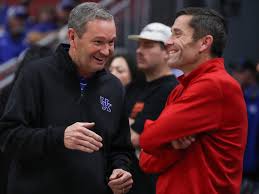
What are the next steps for the Louisville Cardinals and Kentucky Wildcats following the approval of the House settlement?
The recent approval of the House v. NCAA settlement marks a transformative moment in college athletics, particularly for programs like the Louisville Cardinals and Kentucky Wildcats. This $2.8 billion settlement allows universities to directly compensate student-athletes, fundamentally altering the landscape of college sports.
The Louisville Cardinals have emerged from a prolonged period of NCAA scrutiny. An independent panel placed the men’s basketball program on two years of probation and imposed a $5,000 fine but refrained from levying major penalties. This decision effectively clears the program of lingering sanctions, allowing Louisville to move forward without the cloud of past infractions.
Financial Implications
With the settlement’s provisions, Louisville now has the opportunity to allocate up to $20.5 million annually to student-athletes, a figure that will increase over the next decade. This influx of funds necessitates strategic planning to ensure compliance with Title IX and equitable distribution among sports.
Operational Adjustments
Athletic Director Josh Heird has already initiated budgetary adjustments in anticipation of these changes. For instance, the decision not to fill certain staff positions and the postponement of facility projects reflect a proactive approach to managing the financial landscape.
Kentucky Wildcats: Navigating New Norms
Addressing Past Infractions
The Kentucky Wildcats football program recently concluded a settlement with the NCAA over infractions involving 11 players receiving payments for work not performed. The agreement includes two years of probation, a fine, and the vacating of records for games where ineligible players participated. Recruiting and Roster Management
The settlement’s provisions allow Kentucky to expand its football roster from 85 to 120 scholarship players, eliminating walk-on status. This change offers greater flexibility in roster management and recruitment strategies, enabling the program to compete more effectively in the evolving college football landscape. NIL Strategy and Compliance.
Kentucky has been at the forefront of advocating for NIL rights, playing a significant role in opposing the Southeastern Conference’s proposal to cap NIL spending on a per-sport basis. This advocacy ensures that Kentucky can allocate NIL funds across its athletic programs without restrictive caps, providing a competitive advantage in attracting and retaining top talent.
Both Louisville and Kentucky must navigate the complexities of Title IX compliance as they implement new NIL strategies. Ensuring equitable distribution of funds among male and female athletes will be crucial to maintaining compliance and fostering an inclusive athletic environment.
As the July 1, 2025, implementation date approaches, both Louisville and Kentucky are poised to capitalize on the opportunities presented by the House v. NCAA settlement. Strategic planning, transparent communication, and adherence to compliance standards will be essential as they usher in this new era of college athletics.
The approval of the landmark House v. NCAA settlement represents a paradigm shift in college sports, particularly for programs like the Louisville Cardinals and Kentucky Wildcats. This historic settlement permits universities to directly compensate student-athletes, fundamentally changing the collegiate athletics environment. Both schools now face pivotal decisions as they navigate compliance, budgeting, recruitment, and culture in a newly empowered athlete landscape.
This article explores the comprehensive next steps Louisville and Kentucky will undertake to leverage this settlement effectively while maintaining competitive success and institutional integrity.
1. Financial Restructuring and Budget Planning
Both Louisville and Kentucky will need to overhaul their financial frameworks to accommodate the new NIL (Name, Image, and Likeness) payments authorized by the settlement.
- Budget Allocation: With the settlement permitting up to $20.5 million annually per school (rising over a decade), athletic departments must draft clear, equitable budget plans balancing payouts among different sports and genders.
- Equity and Compliance: Title IX compliance mandates that funds be fairly distributed to avoid gender discrimination. Both universities will establish oversight committees, including legal and compliance experts, to ensure adherence.
- Cost-Saving Measures: Louisville’s Athletic Director Josh Heird has already hinted at postponing certain capital projects and freezing hires to fund athlete compensation sustainably. Kentucky, given its larger football roster, might explore similar or distinct cost management strategies.
2. Revamping Recruiting Strategies
The settlement fundamentally alters recruiting tactics, allowing direct financial incentives beyond traditional scholarships.
- Enhanced Player Recruitment: Louisville and Kentucky can now highlight direct payment capabilities when courting top-tier talent. For Kentucky football, the expansion from 85 to 120 scholarship players under the settlement offers a massive recruiting advantage.
- Regional Satellite Camps: Both schools will likely increase their investment in satellite camps, clinics, and scouting, capitalizing on early relationship building with prospects.
- Transfer Portal Dynamics: The increased NIL opportunities might sway transfer decisions heavily. Both programs will monitor the portal closely and tailor NIL packages to attract and retain elite athletes.
3. Compliance Infrastructure Development
Navigating federal and NCAA compliance remains paramount.
- Compliance Teams: Both schools are expected to expand their compliance departments, employing specialists knowledgeable in NIL laws, tax implications, and NCAA rules.
- Education Programs: Initiatives educating athletes on managing their NIL income, financial literacy, and tax responsibilities will be integral. This supports athletes in handling newfound financial power responsibly.
- Monitoring and Reporting: Establishing real-time monitoring systems to track NIL deals and ensure fairness, legality, and compliance with school policies is a priority.
4. Cultural and Institutional Adaptation
Direct athlete payments bring cultural shifts.
- Athlete Empowerment: Players at Louisville and Kentucky will gain unprecedented autonomy over their earnings, influencing team dynamics and individual motivations.
- Staff Training: Coaches and administrators will undergo training on managing NIL issues delicately, fostering positive environments that balance competition and camaraderie.
- Public Relations: Both programs must manage public perception carefully, emphasizing their commitment to fairness, athlete well-being, and academic success amid the changes.
5. Facility and Resource Investment
While some projects may be postponed for budgeting reasons, the schools will prioritize investments enhancing athlete support.
- Performance Centers: Upgraded training facilities and nutrition centers will attract recruits who seek comprehensive development beyond compensation.
- Technology: Data analytics and athlete management systems will become more sophisticated, supporting individualized performance plans aligned with financial incentives.
- Mental Health and Academic Support: As pressures increase, bolstered counseling and tutoring services will ensure holistic athlete welfare.
6. Community and Fan Engagement
Sustaining strong community ties remains crucial.
- Outreach Programs: Louisville and Kentucky might expand youth camps, scholarships, and community service projects, integrating NIL successes with positive community impact.
- Fan Experience: Enhanced fan engagement through digital platforms sharing athletes’ NIL stories could boost program loyalty.
- Media Relations: Transparent communication about how funds are managed and the benefits to athletes will help build trust.
7. Long-Term Athletic and Academic Outcomes
Success will be measured on multiple fronts.
- Competitive Edge: These new NIL policies aim to elevate on-field and on-court performance, but academic retention and graduation rates remain central to institutional missions.
- Research and Feedback: Both universities might participate in longitudinal studies evaluating NIL’s impact on athlete outcomes, refining approaches based on data.
- Policy Advocacy: Kentucky, known for its advocacy on athlete rights, may continue influencing national policy, shaping the evolving collegiate athletic landscape.
The House v. NCAA settlement opens a new chapter for the Louisville Cardinals and Kentucky Wildcats, blending opportunity with responsibility. By embracing financial innovation, refining recruiting, strengthening compliance, and nurturing culture, these storied programs can thrive in the modern collegiate sports era.
The coming years will test their adaptability and vision, but with strategic leadership and athlete-centered policies, Louisville and Kentucky can lead college athletics into a fairer, more competitive, and sustainable future.

